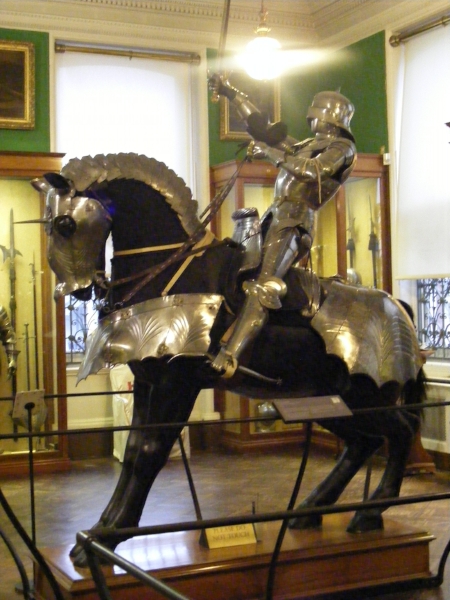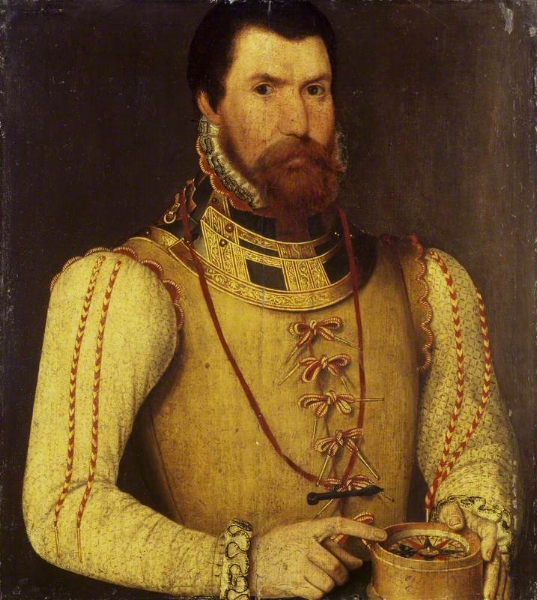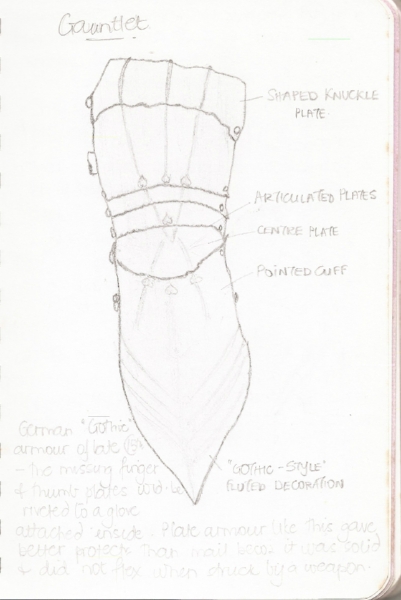Medieval Armour
In the early versions of ‘The Spellbound Spindle’, I’d experimented with having the male characters in full armour. But that didn’t last as it didn’t suit the narrative to have extra people nearby during the fight scenes, like squires to help with the armour and weapons.
c. 1480 Part of The Wallace Collection (own photo)
Instead, I chose for the ‘armour’ to be no more than a padded defensive jacket, called a gambeson, which was usually made of linen or wool.
I didn’t view any of the research as wasted though because I learned a lot, like the terms for the different sections of armour; the whole ‘outfit’ was a lot more complicated than I’d realised.
When armour was first introduced, it was easy to get into as it basically consisted of mail, which was pulled over the head, over which was buckled a coat of plates. The fastenings were either at the back or on the sides and shoulders.
As armour evolved to afford as much protection as possible to the wearer, it became more complicated. Despite its cumbersome appearance, plate armour didn’t take that long to put on and remove. So long as a knight had the help of his squire, he could have the suit of armour on in a matter of minutes, and off again as quickly.
Italian half-armour, The Wallace Collection (own photo)
First, the knight would put on an arming doublet, which was very like a gambeson. In the 15th and 16th centuries, arming doublets were made with arming points. These were reinforced parts on the doublet for lacing pieces of armour.
Edward Fiennes de Clinton, Lord High Admiral, later 1st Earl of Lincoln, wearing an arming doublet and holding a compass (1562) - Wikipedia
After that, a knight was always armed, starting from the feet, moving upwards to finish with the helmet.
Having said that, the images I found with reference points all start at the top and work down. So, to keep things straightforward, I shall start at the top, with the helmet.
A – Helmet, which was lined inside, not only for comfort, but also to cushion blows.
B – ‘Gorget’, a piece of armour to protect the throat.
C – the self-explanatory Shoulder Piece.
D – Palette, which protected the armpit.
E and F – Breastplate.
G – ‘Tasses’, a series of overlapping metal plates that form a short skirt over the body below the waist.
H – ‘Vambrace’, forearm guards.
I – ‘Brassard’, armour for protecting the upper arm.
J – Gauntlet, which was usually fitted with a leather glove inside to allow the knight to grip his weapons.
Gauntlet (own drawing)
K – ‘Cuisse’, a piece of plate armour covering the thigh.
L – ‘Jambeau’, the armour that covered the leg below the knee.
M – Knee Piece.
N – ‘Solleret’, a flexible steel shoe, over which spurs were usually buckled.
It doesn’t show it in the image, but the sword would have been attached to the armour with a belt, which would have had straps at the front and the back to hold the scabbard at a convenient angle.
The Wallace Collection (own photo)
And that wraps up the research I did for this novel. I hope you enjoyed the brief foray into medieval times.






